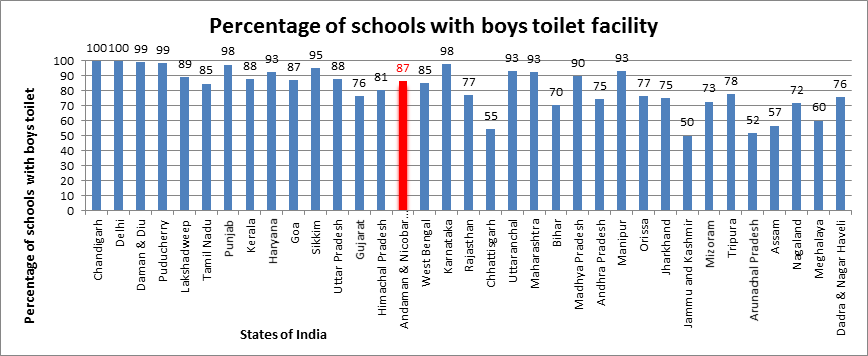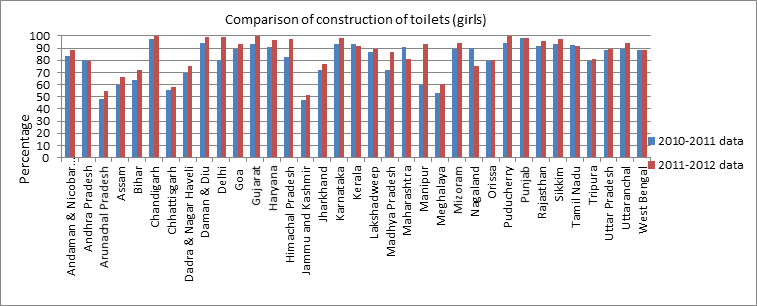Every school needs good students and students need good sanitation. According to India Sanitation Portal, access to sanitary toilets not only ensures dignity of the individual but also positively impacts health, well-being and productivity, reduces drop-out rates and encourages regular attendance in schools.
Sanitation is a major cause for concern for the Centre as well as the state government and as a part of National School Sanitation Initiative (NSSI), it has become mandatory for all schools to focus on the practical aspects of sanitation. The program lays emphasis on personal hygiene, proper sanitation, clean toilet habits, safe drinking water, and separate toilets for girl students, disposal of wastewater, wastewater recycling and waterless urinals.
Are these issues really being taken care of? The sanitation facilities in a school in a village named Rampur Halwara situated 138 kilometers from the capital city Lucknow of Uttar Pradesh is an eye-opener.
The primary school toilet in Rampur Halwara is reserved for teachers and girls from upper castes. They are kept locked and teachers give out the keys only selectively. The excuse is that students from lower caste don’t clean the toilets properly and that’s why they don’t allow them to use it. Such is the condition in a school, where a child has every right to be treated equal in all terms.

Neither the village Pradhan nor the Block Development Officer (BDO) provides any explanation for this situation. The Pradhan’s own children go to better schools in the nearby town so she has no idea about the school sanitation situation in her village. The BDO is not available in his office at most times.
Interestingly, the data from National Elementary Education Report Card (2011-12) compiled by National University of Educational Planning and Administration, New Delhi paints a very different picture on the state of rural sanitation in UP.
It compares the state-wise availability of toilet facility separately for girls and boys and drinking water facility in Indian government schools. Also, it provides total number of enrollments in the schools to calculate the dropout rates. When this data is plotted on a graph, there is an interesting response throughout (Fig 2).



Figure 3 shows that 89.2 % of the schools in Uttar Pradesh have toilet facilities for girls in the school. Then how do we explain the situation in Rampur Halwara village? This is because the 10.8% does not account for the 23,938 number of schools which still lack the sanitation facilities for girls. This is greater than the total number of schools in states such as Kerala, Himachal Pradesh, Tripura, Sikkim, Puducherry, Nagaland, Mizoram, Goa, Delhi and Arunachal Pradesh. Similar is the case for boys’ toilet and other sanitation facility. Add to this, what we find in Rampur Halwara village–that even when structures are there, they aren't used.
Now, let’s compare the percentage of girls and boys toilet constructed by the states in the year 2011-12 with respect to 2010-11. Exhibit 2 (attached) shows the data extracted from the National Elementary Education Report Card 2011-12.


There isn't one solution to this problem but here are some options:
Let the students be the change agents. Designate them as health soldiers. Ask them to report any wrong practices with regards to hygiene to the teacher. The teachers could tell stories and do activities with the children to help them understand the importance of sanitation, different hygienic practices like washing hands, personal hygiene, etc. as well.
/articles/upper-caste-only-school-toilets-0